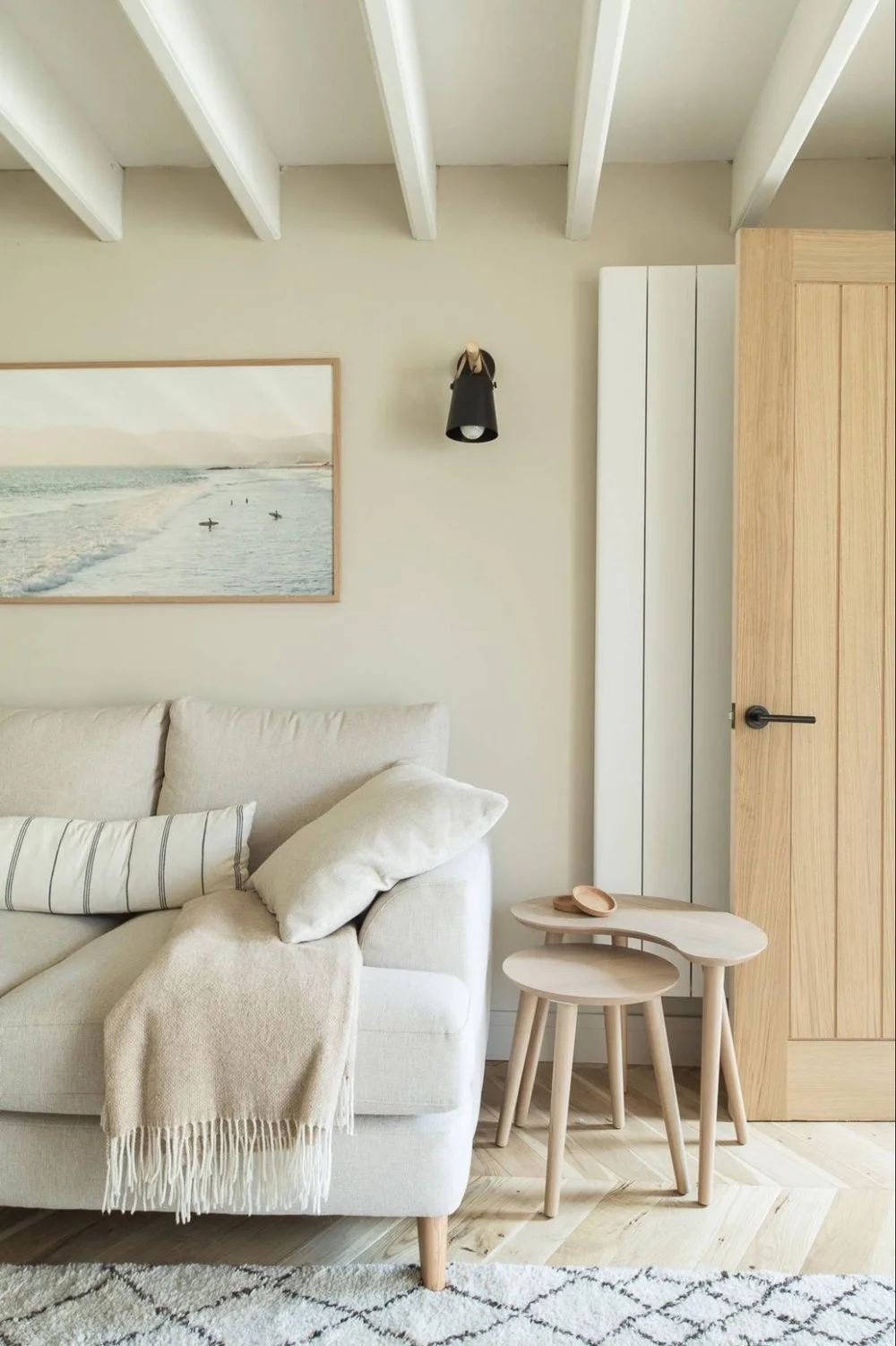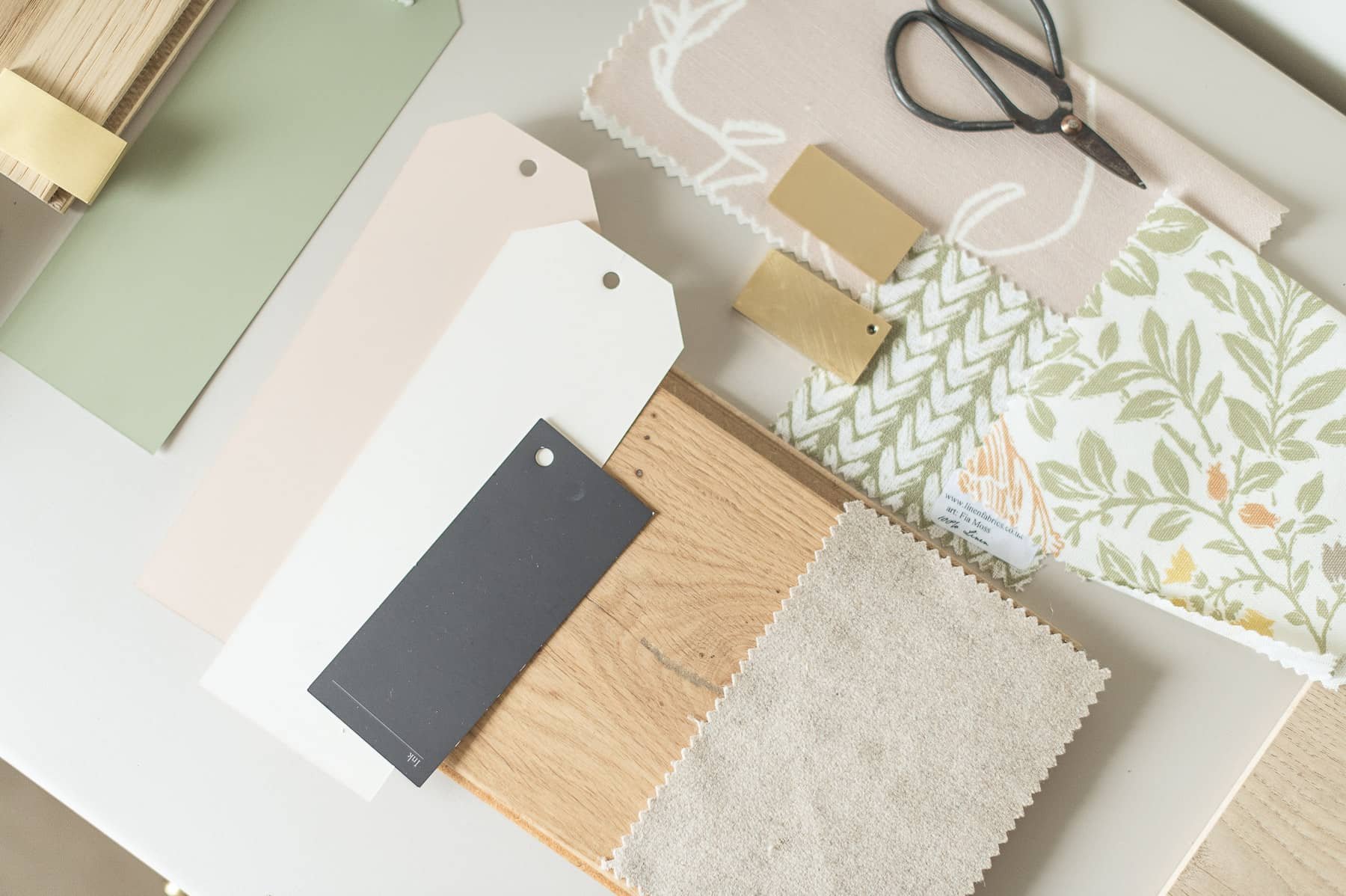How ditching the trends can help you achieve a timeless look
Decision fatigue is a real thing.
What makes it even harder is the constant bombardment of gorgeous new trends that seem to change every minute.
Do you go for gold taps or black? Hell, by the time the bathroom’s finished, chrome will be back in style again.
It’s impossible to keep up with everyone’s idea of what looks good, so I’m here to help you find your own personal style and translate it into a home you’ll love for years.
I’ll take you through everything I learned in Fifi McGee’s interior design course and show you how I created a timeless look through thoughtful decisions based on my own personal taste.
That’s because it’s your own likes and dislikes that will help you hone your unique style and help you work out the difference between what you love on Pinterest and what you’d love in your home.
So let’s get started.
Discover your own personal style with the Home Design Lab
As multi-faceted humans, it’s only natural that we like different things depending on our moods. Or not even our moods. We just like lots of different things, and that’s totally okay! Even the hardiest minimalists still love a cosy blanket in the winter.
I myself have two very different, conflicting styles that I switch between all the time.
One is playful, family-friendly and modern, with bolder colours that help accessories to pop and kids’ toys feel at home.
The other is totally paired back: calm, introverted and thoughtful with natural, muted tones that transport me to a simpler place.
How do they work together? Well, from experience, it can be quite tricky.
When renovating my last house (a holiday let), I focused on the latter. To me, it felt like a safer choice for guests to feel comfortable in and induce the calm and relaxed vibe you want on holiday. But that didn’t stop me from injecting my own style.
I called it ‘Japandi Surf Shack’ and those words encapsulated so much of what I wanted that space to become.
Yes, ‘Japandi’ is having a bit of a moment with its combination of functionality and rustic minimalism as both lean into natural elements and cooler tones. A neutral palette and clean lines will never go out of style.
The ‘surf shack’ element was important to me based on its location (near the coast) and my general love of that relaxed, Californian style that feels just a little bit undone.
Explore your authentic tastes
So how do we choose one look when there is so much to love?
Think about what speaks to you as an individual:
Are you a natural minimalist or a maximalist?
A magpie for the bold and bright or a lover of mindful, muted scenes?
Vintage or modern?
Playful or calm?
Fi At work choosing timeless colours + fabrics for the forest row project
If you’re renovating with a partner, you’ll likely need to make some compromises. That can totally work, but it’s a lengthier process as you marry your separate styles into a coherent scheme.
First up, write down your key personality traits. Are you an introvert or an extrovert? Organised or more laid back?
Then write down a list of the styles you think you like. This could be anything from colour palettes to specific styles you can name, like ‘traditional’, ‘mid-century’, ‘maximalist’ or ‘bohemian’.
Once you’ve considered as much as you can, you should compare notes with your partner. You’ll probably cross over on some areas and perhaps that’s where you can agree to move forward.
If your tastes are completely opposite, try not to worry. There will be ways to make you both happy with different colours or materials further down the road. Perhaps you’ll decide that different rooms can be slightly more tailored to each of you. Accessories are always a great tool to call on to reach a compromise.
Name your style
Defining your unique style will follow from what you’ve just done. Try to agree on three simple adjectives that describe how you want your home to feel.
At our place in Cornwall, I had free reign (as in, my husband wasn’t really involved), so I went for a “relaxed, thoughtful, and contemporary” style.
At our home in London, which we share with our young boys, we collectively agreed on a different style: “playful, practical, and relaxed”.
You’ll probably find that your personality traits link closely with the words you choose for your home. It’s only natural that you’ll want to make it an expression of yourself.
Tighten your brief
By defining your personality and home before you begin the design process, you’re essentially writing a brief for your project.
It can help to give it a name too – like Japandi Surf Shack – or something a little more eclectic, like my brother and sister-in-law’s recent one; Tropical Minimalism.
It means when you log onto Pinterest and are hit with a hundred thousand images of great homes, you immediately know which ones are right for your brief and which you can admire from a distance.
I found this part of the process incredibly helpful.
It really made me think about the trends we’re enjoying right now. The pastel tones and checkerboard rugs of Gen Z dreams turned out not to be my own. And although I can appreciate their fun and colourful feel, I’m not going to love them forever.
This era of trends, however, might end up defining the Gen Z interior style, just like Mid-century Scandi has done for Millennials. Boomers, on the other hand, really don’t understand our fascination with the furniture their parents once liked. But, for many of us, it’s timeless.
Use trends to inspire and refresh
What goes around comes around, and there’s absolutely nothing wrong with buying into a trend if you genuinely love it.
I chose a fair bit of cane and rattan in my latest project, and while it’s definitely doing the interior rounds right now, I imagine it could date quite quickly.
That said, it nods to a trend from the 60s and 70s that offers a personality of its own. It also gives that relaxed, coastal, vintage vibe that connects to my ‘Japandi surf shack’ style. I felt confident that even if my style is past its best in a few years’ time, it was still chosen with the right intentions and will work within the space.
Trends that stand the test of time
Kitchen trends are the ones that tend to stick around, so you really can’t go wrong with classic shaker or minimalist cabinets, depending on the style you’ve gone for elsewhere.
I’m currently lusting after a white quartz worktop at home after ten years of butcher’s block wood, but the reality is it still looks good.
Natural surfaces like stone, wood and marble are the kind of choices we’ve seen in homes for the last 50 years, with modern alternatives like laminate and composites offering affordable and realistic alternatives.
Colour is also fairly stable in the kitchen world, with most trends leaning on simple tweaks like replacement handles or tile updates, which can be done fairly cheaply and easily if you want to switch things up further down the line. The biophilic trend we’ve seen in recent years is also very easy to bring into any kitchen with a few splashes of green and some houseplants.
Trends in this room evolve really slowly.
Open shelving, for example, has been popular for a number of years now but I’ve recently noticed a slight shift from two or three stacked shelves to one, continuous one. It’s such a small detail really but refreshes a space just enough to take on a more contemporary feel.
Mood boards are your best friend
Getting clear on the intentions for your home as a whole and room by room will make a difference to how you’ll live there.
I found the mood-boarding stage of Fifi McGee’s house design course really helped with that. That’s because it gave me a visual reference for how each piece would work together.
If you’re starting with a few pieces of furniture you already own, get those on your board first and see what complements them. If you’re starting from scratch, you’ll probably choose one key piece that leads the rest of the room.
It’s not always obvious when you see something in isolation, so if there’s one hot tip I’ll leave you with, it’s to resist impulse buying. Instead, take or download a photo of that piece and add it to your mood board.
Whatever your style, be true to yourself
Oscar de la Renta once said, “Fashion is about dressing according to what’s fashionable. Style is about being yourself.”
It’s exactly the same for your home.
When you choose a style that truly speaks to you and you follow that through with your colour palette, patterns, textures and accessories, you’re painting an authentic picture of yourself at your most comfortable.
Of course, I’m not suggesting the cushions you choose today will be on your sofa in 10 years’ time. But, by investing in quality pieces made from materials that you know will last, you’ll create a space that you will love for years to come.
Our homes should be our sanctuaries, and by working out exactly what YOU want, you’ll be one step closer to your happiest self.
We’d love to support you!
As you’ve probably guessed from this blog post, discovering your own home style is no easy task.
But not only that, choosing the wrong style can lead to a home feeling disjointed, inauthentic and, at worst, a place you don’t want to spend your time in.
Our Home Design Lab is here to help. Our comprehensive design curriculum will give you the skills and knowledge you need to:
Develop a home style that resonates with you
Design and plan rooms using your style
Source furniture, features and materials to support your style
Create a home you’ll love
By the end of the course, you'll have the knowledge and confidence to turn your home into a personalized haven that showcases your unique style and personality.
Don't settle for a dull and uninspiring home. Join our Home Design Lab Course today and take the first step towards creating the home of your dreams.







